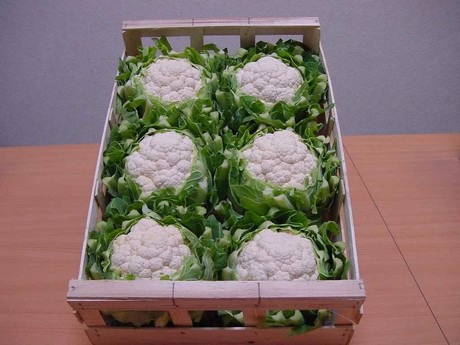In the winter, one of the most important export products for France is the cauliflower. It is exported mainly to other European countries. The Gosselin Group ships and exports wholesale vegetables, and their cauliflowers can be found on the markets of Germany, Great-Britain, Switzerland, Italy, Spain, Portugal, Poland and the Czech Republic.
A window for Spain and Italy
France is the third largest cauliflower producing country in Europe, after Spain and Italy. However, the French production is relatively modest. Among the 2,319,667 tons produced in Europe, only 269,098 tons are produced in France. Nevertheless, Spain and Italy are among the usual destinations for the French cauliflower. “There is always a window for our cauliflower,” explains Nicolas Gosselin, manager of the Gosselin Group. “In the fall and the spring, the Spanish production is limited, so we export a lot of our products to Spain. As for the other European countries, winter and spring are ideal seasons for export.”
“In the past 5-10 years, the export window to other European countries has gotten a little smaller,” adds Nicolas, “Germany and Poland produce a lot more cauliflower than they used to, so we sell less to those countries, compared to 10 years ago. It is particularly noticeable in the fall and winter months.”
Domestic consumption is down
Ten years ago, cauliflower was still widely consumed in France. Today, its consumption has substantially gone down. According to Nicolas, one of the main reasons for this development is the cooking time. “It takes time to prepare cauliflower. People don’t feel like spending a lot of time in the kitchen anymore. Another downside often mentioned by consumers is the product’s smell once cooked.”
 Cauliflowers of the Gosselin Group
Cauliflowers of the Gosselin Group
84% of the French cauliflowers are produced in Brittany. Another 5% is produced in Normandy. The Gosselin Normandie company specializes in those Breton and Norman cauliflowers, which are very different from the ones cultivated in southern Europe. “The French cauliflower weighs more, thanks to the colder climate and the clay-loam soils found in northwestern France,” explains Nicolas.
For more information:
Nicolas Gosselin
Gosselin Normandie
